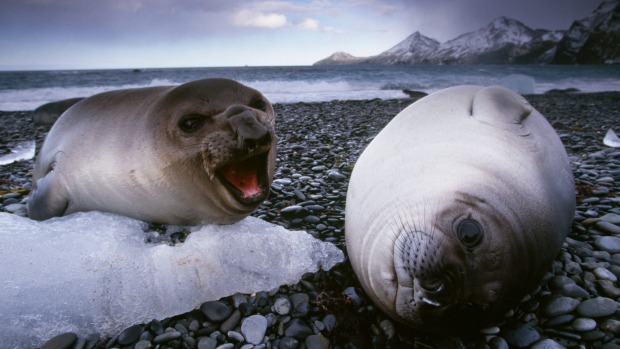
Sailing from Argentina to Antarctica aboard a yacht is as big a journey as you'd imagine, and along the way I discover that most of the old sailing cliches are truisms. Solitary albatross really do stretch out their gargantuan wings above, following the yacht for miles, acting as a totemic guardian angel. Humpback whales cluster around krill hot spots, diving deep to take part in the food fest below, and lithe leopard seals spin and dip and dive around the boat, seemingly mooning for their audience like a class clown.
Spending weeks at sea aboard a yacht makes hitting land a momentous occasion. Some days we're subject to a relentless battering from the ocean, and on other days we're living on pancake-flat seas, stuck in limbo waiting for fortuitous winds. Reaching land means we'll be able to live with some sort of certainty in our lives, for a few sweet days at least.
While completing a continental landing on Antarctica was a thrill, exploring the islands of the sub-Antarctic region remains a true highlight of a long (and sometimes testing) voyage. With rolling, green hills providing the perfect territory for a long ramble and huge populations of penguins and seals, it's no wonder South Georgia Island is a favourite with nature documentary filmmakers.
During the breeding season, some parts of South Georgia Island are said to contain more wildlife per square metre than anywhere else in the world and for the few days I am docked at South Georgia's Grytviken Harbour I can't walk a few steps without having company. Maintaining a five-metre distance from all wildlife is the recommendation, however, what happens to that rule when you're standing on the beach and get surrounded by a cast of curious king penguins? Or when a troupe of rambunctious fur seals surround the wooden dock where your home is moored? Every corner of South Georgia is crawling with wildlife, which makes for endlessly entertaining walks populated by a cast of guest stars, none more impressive than the weighty elephant seal (who you smell and hear long before you see).
But the action isn't limited to the day time and there's one element to this part of the world that the brochures don't tell you about. By night, South Georgia Island offers incredible stargazing opportunities. Extremely isolated and without a permanent human population (except for a few caretakers installed by the British Government) South Georgia is free from light pollution. The night sky appears in all its high definition, 3D, widescreen, celestial glory, and lying on the deck of the yacht admiring the greatest show on earth is soul-stirring stuff.
The sky is alive and populated by millions of bright stars. Seeing a shooting star isn't a rarity in this environment, it's a given.
Jo Stewart
The sky is alive and populated by millions of bright stars. Seeing a shooting star isn't a rarity in this environment, it's a given. It's all so beautiful that it's hard to look away, and my newfound obsession with the night sky becomes all-consuming. Creeping up on deck in the dead of night to commune with the sky becomes a private ritual I relish more than any other daytime adventure.
This is probably what the night sky looked like before industrialisation, before ambient light slowly swept across Earth, diminishing our ability to see the galactic show above. For now, South Georgia remains as one of the best places in the world to see the stars as our ancestors did and now when I look above our city skyline and strain to see a few meagre stars, I've got South Georgia on my mind.
Jo Stewart travelled with Ocean Expeditions aboard the Australis.